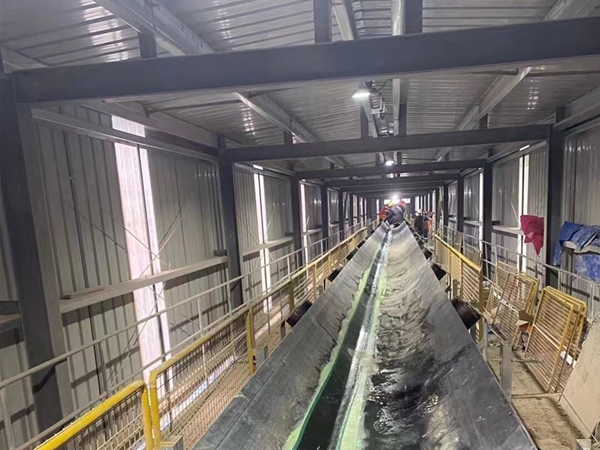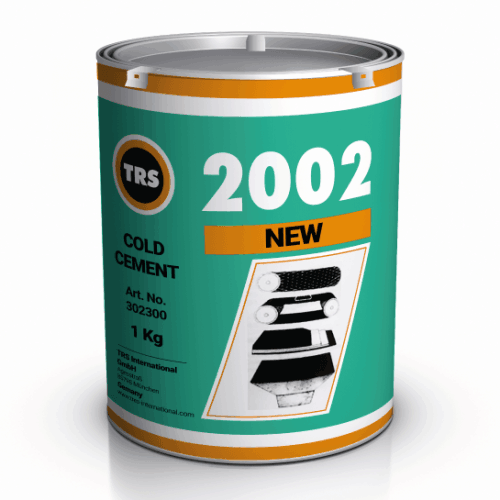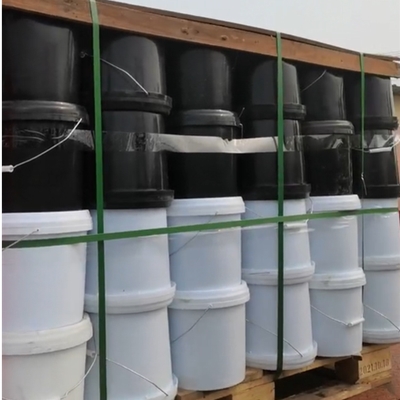In mining-intensive countries such as Indonesia, Australia, Chile, Brazil, Peru, and the Philippines, conveyor belts are the lifelines of material handling. Ensuring conveyor belt reliability is a top priority for engineers, maintenance technicians, and procurement managers in these regions. A critical aspect of this reliability is how belts are spliced (joined) when installing or repairing new ones. Hot vulcanization (or hot splicing) is the preferred method for creating high-strength, long-lasting joints in heavy-duty mining conveyors. But the effectiveness of a hot splice largely depends on selecting the right splicing materials, especially Uncured cover rubber and Uncured Intermediate Rubber(tie gum), and using them correctly.
Why Proper Hot Vulcanized Splices Matter in Mining
Mining operations demand conveyor belts that can carry heavy loads of ore, coal, and aggregates over long distances under harsh conditions. The entire production can halt if a splice fails, leading to costly downtime and safety hazards. A well-executed hot vulcanized splice can achieve a tensile strength close to the original belt, far outperforming mechanical fasteners. This strength and durability come from using specialized conveyor belt hot splicing materials designed to bond with the belt’s rubber. By choosing high-quality splicing materials and following best practices, mining companies can extend belt life, ensure safety, and improve operational efficiency.
Understanding Hot Vulcanization Adhesives
Hot vulcanization splicing uses uncured rubber materials that chemically bond to the belt when heat and pressure are applied. These adhesives are typically rubber sheets or compounds that, when vulcanized, form a seamless, flexible joint with excellent abrasion and tear resistance. Key characteristics of hot splicing adhesives include:
Strong Bonding: They fuse with the belt’s material (whether fabric or steel cord) to create an integral join that resists separation under tension.
Durability: Once cured, the splice material has similar wear resistance, elasticity, and tensile strength as the belt itself, allowing it to withstand heavy use and harsh conditions.
Temperature-Specific Curing: Each material has an optimal curing temperature and time. For instance, some uncured rubber sheets might require around 140°C (284°F) for 30–40 minutes to vulcanize properly (always follow the manufacturer’s specifications). Precise temperature and timing ensure the rubber cures fully without burning or under-curing, resulting in a reliable joint.
Using the correct adhesive materials and vulcanizing parameters is crucial. Even the best uncured cover rubber for mining belts will underperform if not cured at the right temperature or if used past its shelf life.
Matching Belt Splicing Materials to Belt Type
Conveyor belt composition varies – common belt types include steel-cord belts, multi-ply fabric belts (often with nylon or polyester carcasses), and even PVC or PU belts for light-duty applications. Each belt type demands compatible hot splicing materials:
Rubber conveyor belts (Fabric or Steel-Cord): These belts (prevalent in mining) usually require natural or synthetic rubber-based splicing materials. The uncured cover rubber and tie gum must match the belt’s rubber type (e.g., NR, SBR, or special heat-resistant compounds) to ensure chemical compatibility. Using the same base polymer family as the belt improves bonding. For example, a steel-cord belt in a coal mine will use uncured cover and skim rubber formulated for that belt’s compound, achieving a splice that can handle high tension and impact.
PVC or PU belts: Less common in heavy mining, but when used (say in some processing plants), they need special adhesive systems. PVC belts often use dedicated hot splice PVC compounds or hot vulcanization cements that adhere to plastomeric materials. Using a standard rubber-based adhesive on a PVC or polyurethane belt would fail, so ensure the adhesive matches the belt type (many manufacturers provide specific splicing kits for these belts).
Understanding your belt’s construction and material is the first step. A compatible adhesive ensures the splice can reach full strength. Incompatible materials may not bond properly, leading to premature splice failure. Always consult the belt manufacturer’s guidelines or an experienced vulcanization specialist when in doubt.
Considering the Operating Environment
The working environment of a conveyor belt significantly influences adhesive selection. In mining, conditions can vary widely:
Humidity and Moisture: In tropical mines (e.g., in Indonesia or the Philippines) with high humidity, or in operations where the conveyor is exposed to rain, select splicing materials with strong water resistance. Moisture can interfere with bonding if materials are not suited for it. Special cleaning agents and quick-drying cements help ensure no water is trapped during splicing.
Temperature Extremes: High-temperature environments (such as surface mines in Australian summers or near smelting furnaces) require heat-resistant uncured rubber compounds and cements. These formulations won’t deteriorate or cure improperly under intense heat. Conversely, in very cold conditions (like high-altitude mines in Chile or Peru), you might need adhesives that can cure at lower temperatures or that remain flexible in the cold after vulcanization.
Material Being Conveyed: Sharp or abrasive materials (like mineral ores) put extra stress on splices. In such cases, using an uncured cover rubber with superior abrasion resistance is important to protect the joint. If the conveyed material produces oils or chemicals (for example, oil sands or certain ore concentrates), ensure the adhesive is oil- or chemical-resistant. Additionally, coal mines or grain facilities may require flame-retardant splicing materials for safety (some hot vulcanization cements are formulated to be flame-resistant, meeting underground mine regulations).
By accounting for the environment, you choose splicing materials that maintain their bond and properties during operation. For instance, a splice in a rain-soaked coal mine needs different preparation and materials than one in a dry, hot desert copper mine.
Main Hot Splicing Materials and Their Roles
A successful hot vulcanized splice uses a combination of materials, each serving a specific purpose. The most critical in these are uncured cover rubber and uncured skim rubber (tie gum), which together form the bulk of the new splice and give it strength. Along with them, a hot solution and a proper cleaning agent complete the splicing kit. Below are the main hot splicing materials and why they matter:
Uncured Cover Rubber – This unvulcanized rubber sheet replaces or rebuilds the belt’s top and bottom cover layers at the splice. It has excellent tack and high tensile strength once cured. During the hot vulcanization process, uncured cover rubber becomes pliable enough to flow and fill gaps, then cures to form a seamless extension of the belt’s original cover. This provides a protective, wear-resistant layer over the joint, which is essential for belts in abrasive mining conditions. High-quality uncured cover rubber enhances wear and tear resistance and protects the belt’s core from damage or moisture. It is commonly used for splicing steel-cord and fabric belts in heavy industries (from coal mines to power plants to steel mills) and ensures the splice can handle the same abrasion and impact as the rest of the belt.
Uncured Intermediate Rubber (Tie Gum) – Also known simply as tie gum or skim rubber, this uncured intermediate rubber rebuilds the internal layers of the belt during splicing. It is applied between belt plies or around steel cords to bond the belt’s carcass layers together. After vulcanization, the uncured intermediate rubber becomes an integral part of the belt structure, providing flexibility and strength within the splice. This layer ties everything together, eliminating potential weak points between fabric plies or between cords and the surrounding rubber. A good uncured skim rubber offers strong adhesion to both the belt fabric/cord and the cover rubber, plus excellent resistance to abrasion, corrosion, and aging. Using a quality tie gum greatly increases splice integrity, allowing the joint to flex under load without cracking and to withstand the strain of heavy loads. It’s especially critical in steel cord belt splices and high-tension fabric belt splices, where maintaining internal bond strength is paramount for safety and performance.
Hot Vulcanizing Solution (Glue) – This is a specialized liquid adhesive applied to the surfaces that will be bonded (for example, the exposed fabric layers of the belt carcass and the mating surfaces of the uncured rubber). The cement penetrates fabric fibers and dries to a tacky finish, ensuring a strong initial grip. When heat is applied, it vulcanizes along with the rubber sheets, creating a chemical bond that significantly increases the splice strength. A quality hot vulcanization cement is often flame-resistant (important for underground mines or any application with fire risk) and formulated for exceptional adhesion. It effectively primes the belt’s prepared surfaces to bond with the new uncured rubber, helping the new and old materials cure into one solid piece. In high-load conditions, using the proper vulcanizing cement can be the difference between a splice that holds firm and one that begins to separate under stress.
Cleaning Agent – Any successful bonding process starts with a clean foundation. Special cleaning solvents are used to remove dirt, oil, and other impurities from the prepared splice surfaces before applying cement and uncured rubber. Unlike generic solvents, the cleaning agents for conveyor splicing are typically non-flammable and fast-drying, making them safe for use in confined or hazardous environments (like underground mines). Thoroughly cleaning the belt’s surfaces ensures that the hot splicing materials can fully adhere without interference from grime or moisture. Always let the cleaning agent evaporate completely before proceeding to apply the cement and rubber materials.
Together, these splicing materials work in harmony during the hot vulcanization process. When the prepared joint is placed in a vulcanizing press, the combination of heat and pressure causes the uncured cover and skim rubbers to cure (along with the cement), bonding to the belt and each other. The result is a single, homogeneous belt piece at the joint, with no discernible weak point.
Best Operations for High-Strength Splices
Selecting the right materials is only part of achieving a strong splice – proper technique and quality control are equally important. Here are some best practices to ensure a successful hot vulcanized splice in mining conveyors:
Material Quality and Freshness: Always use high-quality splicing kits from reputable suppliers. Check expiration dates on uncured cover rubber and cements—using too old materials can result in poor vulcanization or weak bonds. It’s wise to source materials from suppliers with a proven track record in the mining industry, as their products are formulated for heavy-duty performance in rugged conditions.
Compatibility: Ensure all components are compatible with each other and your specific belt. For example, if your belt is a special grade (oil-resistant, flame-retardant, etc.), procure matching splicing materials designed for that belt type. Mixing products from different brands can lead to suboptimal curing if the chemical formulations differ. Whenever possible, use a complete splicing kit from one manufacturer to guarantee compatibility across all materials.
Surface Preparation: Follow meticulous preparation procedures. Cut and step the belt ends exactly as specified by the belt manufacturer’s splicing manual. Grind or buff the rubber surfaces to provide the proper texture for bonding. Remove any oxidized or burnt rubber. Clean thoroughly and apply vulcanizing cement evenly as directed. Patience in preparation yields stronger results – rushed or sloppy prep work often leads to premature splice failure.
Curing Process Control: Use a reliable vulcanizing press and adhere to the recommended curing temperature, pressure, and time for your belt and materials. Monitor the press gauges to ensure uniform heat and pressure throughout the cook. Never shortcut the curing or cooling times; the splice should remain under pressure until it has cooled to ambient temperature to set properly. Every belt has specific splice parameters – following these precisely ensures the hot vulcanized splice develops its full strength.
Environmental Precautions: If you must splice in challenging conditions (for example, outdoors in rain or dust, or freezing weather), take steps to mitigate environmental factors. Erect a temporary shelter or tent around the splice area to keep out moisture and debris. In high humidity, use heaters or dehumidifiers if possible, and choose fast-curing, moisture-tolerant materials. In cold weather, use insulated blankets or heat lamps to maintain the proper curing temperature. Adjust the cure time if necessary to compensate for environmental factors (but always within manufacturer guidelines).
Testing and Inspection: After the splice is completed, perform a thorough inspection. Tap along the splice with a hammer – a clear, solid sound indicates good bonding, whereas a dull or hollow sound may reveal internal separation (a sign of a poor bond). Many companies also perform test splices on small belt samples before the actual operation, especially when using a new material batch or splicing a new belt type, to verify the process. If possible, conduct a tensile test on a sample strip to ensure it meets the required strength. Taking the time to test and inspect can catch issues before the belt is put back into service.
Conclusion
In the demanding world of mining, every conveyor belt splice must hold up to extreme stress. By carefully choosing the appropriate conveyor belt hot splicing materials and following best practices, your operation can achieve splices that are as reliable and long-lasting as the rest of the belt. Key uncured rubber materials like Uncured Cover Rubber and Uncured Intermediate Rubber (tie gum) play an outsized role in splice strength – investing in quality materials and expert installation means fewer unexpected breakdowns and a safer, more productive conveyor system. For any queries, consult professionals who specialize in conveyor hot vulcanization. We provide not only high-quality splicing materials but also technical support to ensure your splices are done right the first time. Contact us today for personalized guidance on selecting hot vulcanization materials or to schedule professional splicing support.



